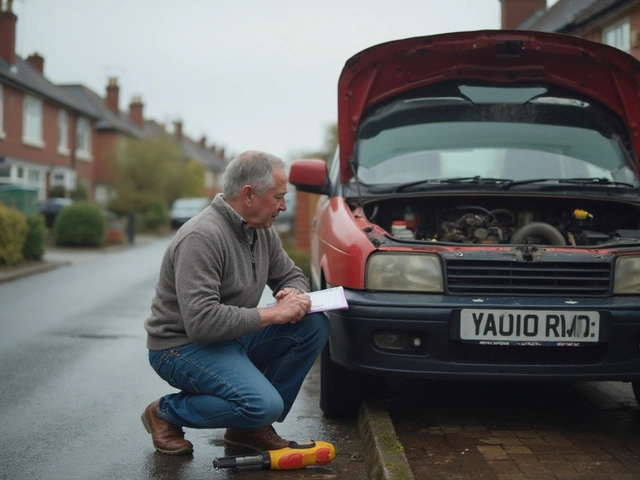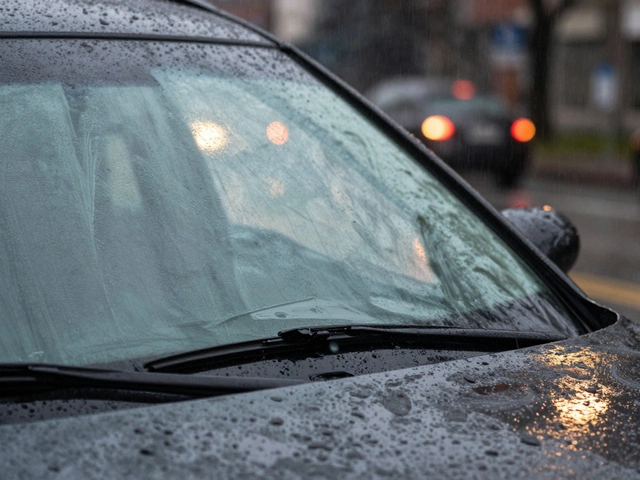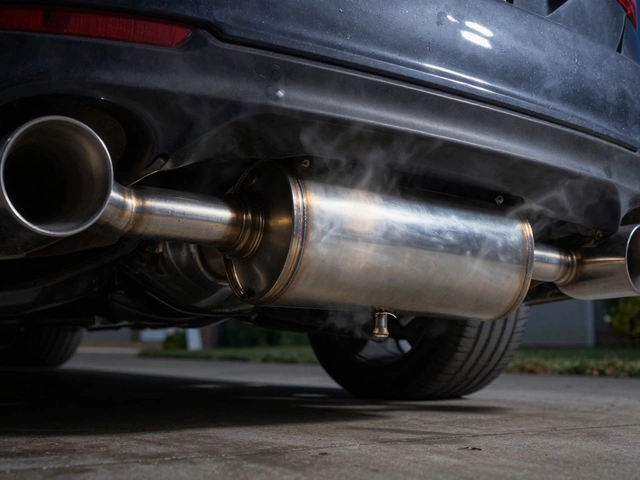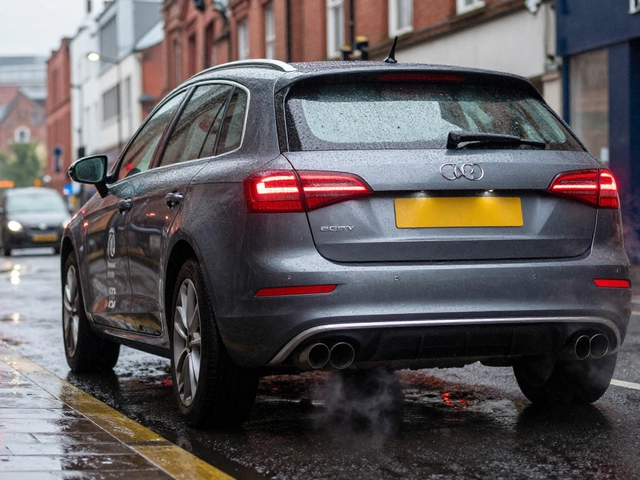Time for an oil change and you accidentally pour in a bit more than you meant to. You double-check the dipstick. Drat. It's a quart over the max line—should you freak out, or is it fine? Every car owner’s probably been there at least once; if they say they haven’t, they’re either fibbing or incredibly lucky. The honest truth is, oil isn’t one of those things where "more is always better." But the answer isn’t just a blunt yes or no—what actually happens inside your engine with an extra quart of oil is surprisingly complex (and a bit weirdly fascinating). Let’s break it down, myth-bust a few old wives’ tales, and see what’s really at stake when you overfill.
What Happens When You Overfill Your Engine Oil?
Pop open your bonnet and you’ll spot the dipstick and oil cap, but probably not the intricate pathways the oil takes through your engine. Normally, motor oil acts as the lifeblood of your car, cushioning metal parts, pulling away heat, and cleaning the engine. Most engines are designed with a "safe zone" for oil levels—enough for circulation, not so much that it causes chaos. When you pour in that extra quart, oil has to go somewhere. It doesn’t just quietly hang out at the bottom of the engine; it sloshes into moving parts, sometimes getting whipped up by the crankshaft like a kitchen mixer on full blast.
If the oil gets high enough, your crankshaft dips into it and froths it up. Imagine dunking an egg beater into a bowl of oil. Suddenly you don’t just have oil, you’ve got "oil foam." Engines don’t like foam at all. Foam doesn’t lubricate well; in fact, it acts more like a barrier that keeps moving parts from actually making contact with a proper oil film. This can mean faster wear and, in worst cases, actual damage to bearings and other sensitive parts.
Now, will one quart over the mark instantly destroy your engine? Usually not, if you’re driving a bigger car or lorry with a massive oil pan. Smaller engines—your peppy hatchbacks and compacts—are a different story. With less wiggle room, it takes less oil to clog things up or put extra pressure on the gaskets and seals, potentially causing leaks. A 2020 report by the Society of Automotive Engineers (SAE) showed that modern 4-cylinder engines are particularly sensitive to even small oil overfills, while larger engines can sometimes shrug off a quart with little drama—though it's never a best practice either way.
Here’s an at-a-glance breakdown of possible outcomes if you overfill by a quart, based on typical engine sizes:
| Engine Size | Usual Oil Capacity | One Quart Overfill | Potential Issues |
|---|---|---|---|
| Small (1.0–1.8L) | 3–4 quarts | 25–33% over | High risk of foam, leaks |
| Medium (2.0–3.0L) | 4–5 quarts | 20–25% over | Moderate risk, depends on engine |
| Large (4.0L+) | 6–8 quarts | 12–17% over | Lower risk, but still not recommended |
Temperature also plays a role—high heat makes oil expand and increases pressure. So, in July, when it’s pushing 30°C in Manchester, your overfilled oil pan can quickly turn into a much bigger headache than on a chilly day in February.
Misconceptions and Myth-Busting: The Truth About Oil Overfill
If you’ve ever had a mechanic mate wag their finger and say, “One extra quart means instant engine doom,” take it with a pinch of salt. Here’s why: modern cars, especially those made after 2015, usually have a little built-in tolerance for small overfills. Manufacturers know we’re only human and sometimes pour a bit extra when we’re squinting at the dipstick in a dark garage.
However, not every car is built equal. Turbocharged engines, for instance, cope poorly with overfill because extra oil pressure can force oil into the turbo where it shouldn’t go, sometimes causing smoky exhaust or even damage. Cars with variable valve timing also don’t like their oil systems being tampered with; incorrect oil levels can affect the delicate hydraulic systems running those fancy cams. Even cars with old-school engines can suffer if overfilled for a long time—rubber seals swell, the catalytic converter can get contaminated, and in rare cases, you might even hydrolock the engine if enough oil gets sucked into the intake through the PCV system.
The internet is full of stories and advice—some true, some plain daft. For example, “The oil filter will catch the extra oil" is a misconception; the oil filter isn’t a magical overflow tank, it just sieves debris. Another: “It doesn’t matter if you’re just driving short distances.” Wrong. Foaming can happen at idle or on the motorway, and damaging the bottom end of your engine isn’t something that waits until a road trip—it can happen in the next twenty minutes if you’re out of luck.
Avoid the "top tip" of draining via the oil plug if you’ve only slightly overfilled. Most people end up draining far too much or covering their garage floor in hot oil. If you overfill, use a cheap suction pump to pull excess out through the dipstick tube, or see if your local garage will lend a hand—for a fiver and a laugh, they probably will.

What To Do If You Added Too Much Oil
First: don’t panic. Check exactly how much you've overfilled by wiping the dipstick, reinserting it, and looking at the oil level against the marks. If it’s just a millimetre over the max mark, you’re likely safe to drive to a mechanic for correction, especially if you’re not noticing any strange noises, smoke, or warning lights.
Oil fill marks are there for good reason, though. If you’ve overfilled by a full quart (around 950 ml in UK terms), especially in a smaller engine, it’s best not to take chances. Too much oil can make seals blow, cause leaks, burn oil, and worst of all, destroy engine bearings. The risks rise if you have a high-revving engine, a turbo, or your oil level is much higher than "max."
Here’s what you should do:
- Let the car cool for at least 30 minutes. Hot oil is thin and steamy—not safe to handle.
- Double-check the dipstick. Make sure the car is parked flat.
- If you can, use an oil extractor pump. These cost about £10–15 and suck oil out through the dipstick tube. No mess, no crawling under the car.
- If that’s not possible, and you must run the car, keep an eye (and a nose) out for odd smells (burning oil), white or blue smoke, drop in performance, or oil warning lights.
- For big overfills or any worrying symptoms, don’t risk driving. Call for a tow or roadside mechanic. The £50–£100 you’ll spend is a lot better than a new engine.
Another tip: when refilling, always add oil in small amounts and wait a few minutes between checks—oil sometimes takes a while to settle, especially on cold or recently shut-off engines. If you keep having trouble reading your dipstick (some cars have confusing ones), check YouTube for model-specific tricks or ask your local garage to give you a quick lesson next service.
Some experienced mechanics even recommend doing oil fills in half-litre steps, checking each time, and moving your car off ramps to level ground before the final measurement for best results (some quirky French cars are infamous for extremely fussy oil levels).
Prevention: Best Practices for Oil Maintenance
The golden rule: when it comes to engine oil, don’t wing it. Your owner’s manual tells you exactly how much oil is the right amount—ignore it at your peril. Figure out whether you read measurements in litres or quarts and never rely on memory or "eyeballing" the bottle. Most modern cars in the UK use between 3.5 and 5.5 litres for a full oil change, but check your car’s specs online if you’re not sure.
Invest in a cheap oil extractor or grab a funnel with built-in markings. Keep an old towel or rag handy for the inevitable drip. If you spill, wipe it up—oil can break down plastics, deteriorate cables, and cause smells in your engine bay. The right tools make home maintenance easier and save you money in the long run.
The best practice is to check your oil level regularly. That doesn’t mean obsessively every week if your car’s running well, but a quick glance every month or whenever you’re planning a long trip. If your car’s burning oil (lots of classic BMWs, for example), step up your checks, especially if you do motorway miles.
Keep in mind that topping up is not the same as an oil change. If the oil is black and gritty or smells burnt, your engine wants a full swap, not a quick top-off. And if you’re always topping up, you could have slow leaks or rings starting to wear—grab a UV oil dye kit to check for sneaky leaks at your next oil change. Many UK garages now offer quick oil level checks for free—don't be embarrassed to ask if you’re not sure. Mechanics would rather answer "daft" questions than repair avoidable damage.
One last stat: Research from Castrol UK found that about 15% of UK car breakdowns in summer are either directly caused by oil problems or made worse by low/high oil. That’s a fair whack of problems you can skip with a few minutes and a rag.
So, will one extra quart of oil hurt your engine? It could, especially if you repeat the mistake or drive hard with the overfill. Most of the time it won’t cause instant death, but long-term issues stack up. Be precise, double-check, and if you do overshoot, don’t just hope for the best—fix it before it costs you a fortune. Your car, your wallet, and your garage floor will all thank you.








